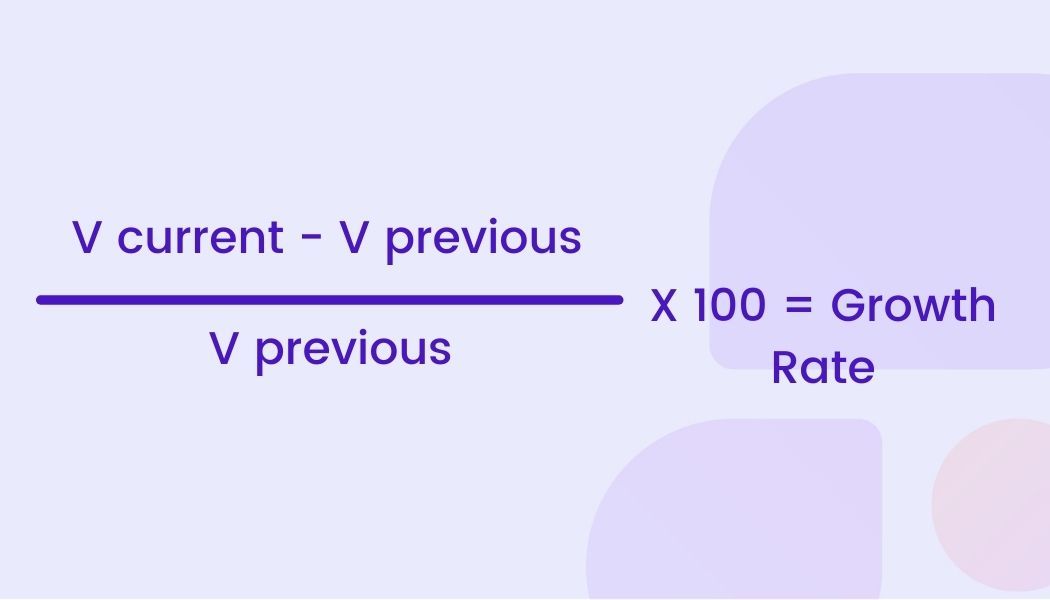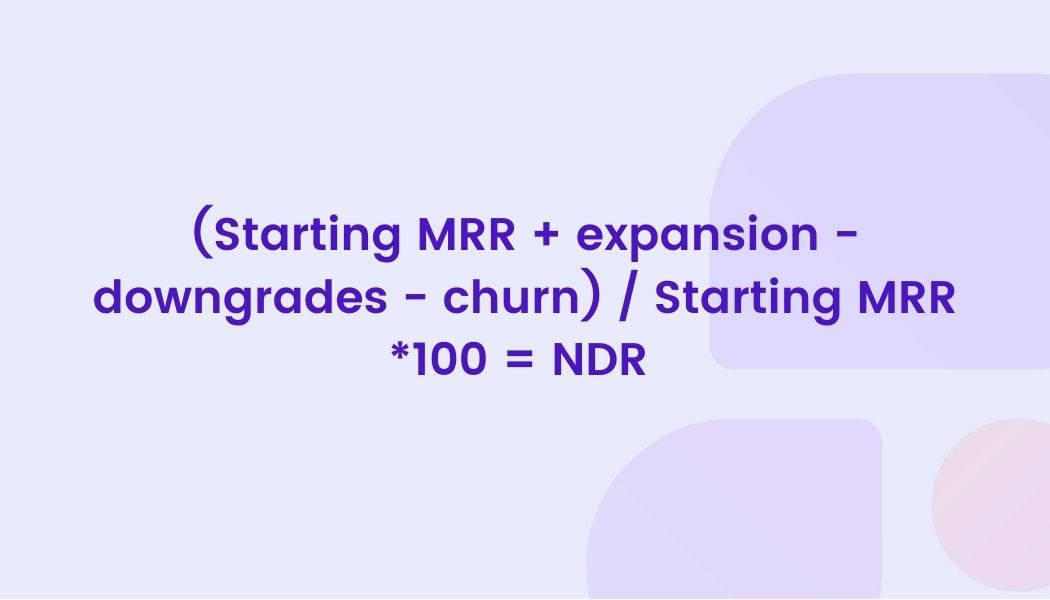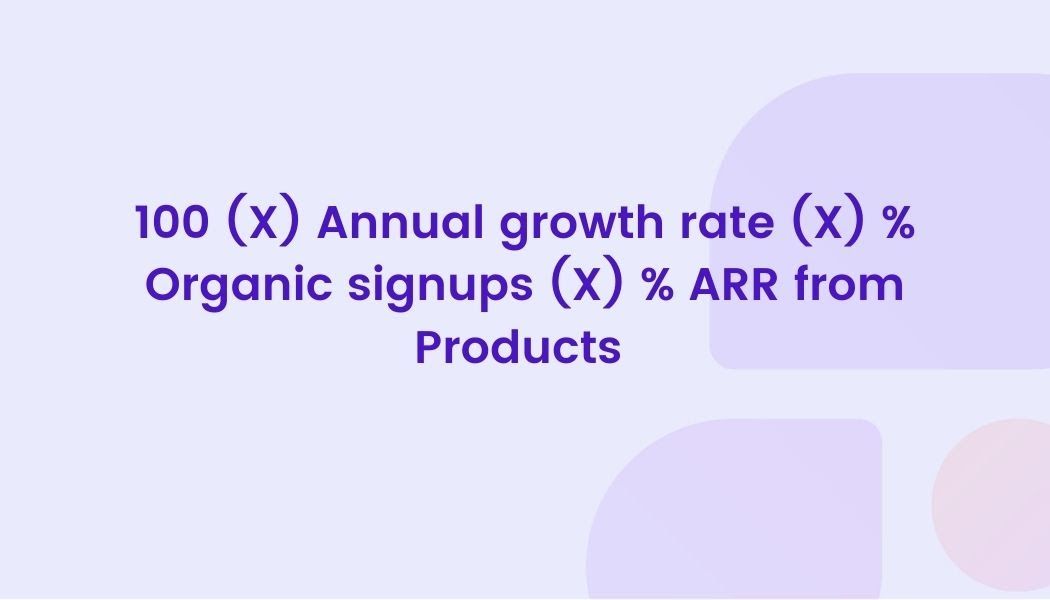No matter what service is being provided, growth is one of the main objectives of any SaaS company. We use growth as a barometer of business success, but how do we measure that growth? Using growth rates.
Growth rates allow you to see where your service is succeeding and, more importantly, where it’s failing. While it may not be satisfying to discover your growth rates are slow, it’s vital to understanding what approaches you need to take going forward.
But since a SaaS company includes so many different growth rates, it can be intimidating to figure out what exactly you should be tracking.
In this article, we’ll explain:
- The different types of growth rates
- The simple formula for calculating them
What are growth rates?
Before we get into the different types of growth rates you’ll encounter, we should probably explain what growth rates actually are.
Growth rates are the measurement of an increase in a certain metric over a certain period of time. They’re not exclusive to SaaS companies and can be used to measure any kind of growth from economic to population growth.
Different companies will be interested in tracking different growth rates depending on the service they provide. Therefore, each industry will have a different perspective of what a positive growth rate is.
For SaaS companies, the most commonly tracked growth rates are those that follow the popularity of the service. These could be measurements of how much revenue is being produced, or how many users are engaged with the service.
It’s important you keep a track of all the different types of growth rates and understand where your company is blossoming, as well as where it could be improved.

Different types of growth rates
Revenue growth
Revenue growth is the measurement of the increase or decrease of a company’s sales. This measurement can be over any given time period, but is most often used to calculate the monthly recurring revenue (MRR). It’s shown as a percentage and reveals whether or not your revenue has grown or shrunk during that period of time.
Measuring this growth for longer than a month would give a stronger picture of how far your company has come and how it will progress. It can also help you set goals and track whether or not you are meeting these expectations.
Market growth
Market growth is a larger metric that can measure the potential growth of your SaaS company.
This metric requires you to know the current total market revenue and the previous market revenue.
This growth is particularly important to measure as it can be a strong indicator of how your company stacks up against the competition. If your company is falling behind in revenue, it means you need to evaluate what other companies are doing in relation to you.
User growth rates
User growth rate is a slightly easier metric to follow, but is still just as important to track as the others. It’s the measure of how many users you gained during a certain period of time after taking churned users into account.
This metric is crucial, as it informs you if users like your product and your attempts to gain new customers through marketing and sales are successful. If this growth rate is low, then it signals something is not lining up with your company and changes need to be made.
How to calculate growth rates
Basic formula
The standard formula for calculating most growth rates is relatively simple to use. It requires you to know the starting value and the current value of whatever metric you are observing.
Once you have both of these values, you must subtract the previous value from the current value. Once subtracted, divide the difference by the previous value and multiply it by 100 to create the percentage growth.
This formula works for most growth rates, including revenue growth, market growth, and user growth.

Net dollar retention (NDR) formula
Net dollar retention (NDR) is quickly becoming one of the most popular metrics to determine a SaaS company's potential growth. It measures the generation of revenue in comparison with the loss of revenue, both of which are quite common for SaaS companies.
It acknowledges the amount of money that is generated from existing customers and upgraded customers, alongside the loss or downgrade of customers. It’s presented as a percentage, with any measurement higher than 100% meaning that existing customers are generating more revenue faster than you are losing customers.
Since it takes more areas into consideration, it has a few more steps than the basic growth rate formula, but the same foundation is used.
You begin by adding the starting value of your revenue to any newly acquired customers or increase in usage.
An example of this would be a user upgrading from a $10 basic plan to a $30 premium plan. Your expansion revenue would be $20.
$30-$10 = $20 net
You then subtract this value from the total of downgrades and churn you received.
An example of a downgrade would be a user moving from the $30 premium plan to the $10 basic plan. The net decrease here would be $20.
$10-$30 = $20
This value will then be divided by the starting value and multiplied by 100 to find the percentage of NDR growth.

Natural rate of growth (NRG) formula
Natural rate of growth (NRG) reveals the amount of growth a company can see without purposefully trying to grow.
This metric is most commonly used by companies that adopt a product-led approach. Essentially, it shows companies how attractive their product is without any marketing or sales strategies.
On its own, the metric may not be able to show much, but when combined with other metrics it can help determine how successful a product will be for a company.
The formula to calculate the natural rate of growth requires specific knowledge of where your growth is coming from, but once you have the necessary information it is just as simple to perform as the basic formula.

Annual growth rate = your revenue growth over the course of a year
% Organic signups = signups that weren’t acquired from paid marketing.
% ARR = The percentage of revenue that you gain from customers who signed up to your service by willingly using the product, this could be from a free trial or free product.
Once you know these three components, you multiply them together and multiply the new total by 100 to find your natural rate of growth.
Growth rates are crucial for SaaS companies, as they can often signal whether or not your service will succeed.
Hopefully, this article has shown how easy it is to calculate and understand your growth rates in order to improve your product.
You can follow any growth rate that you feel is appropriate for your company, but being aware of all of your growth rates will ensure your company continues to grow.



